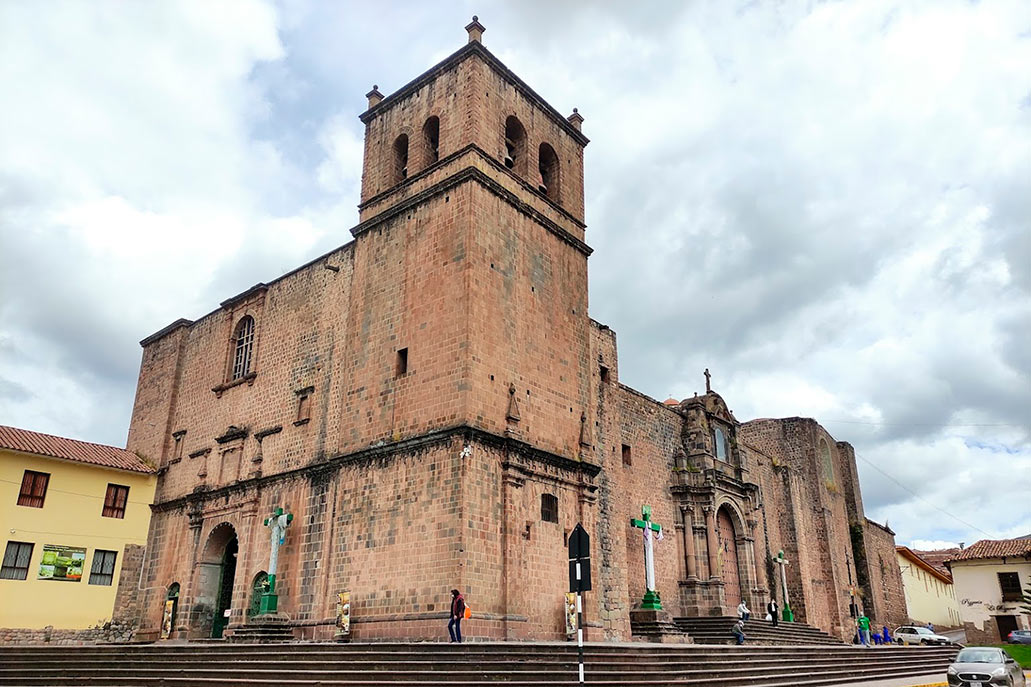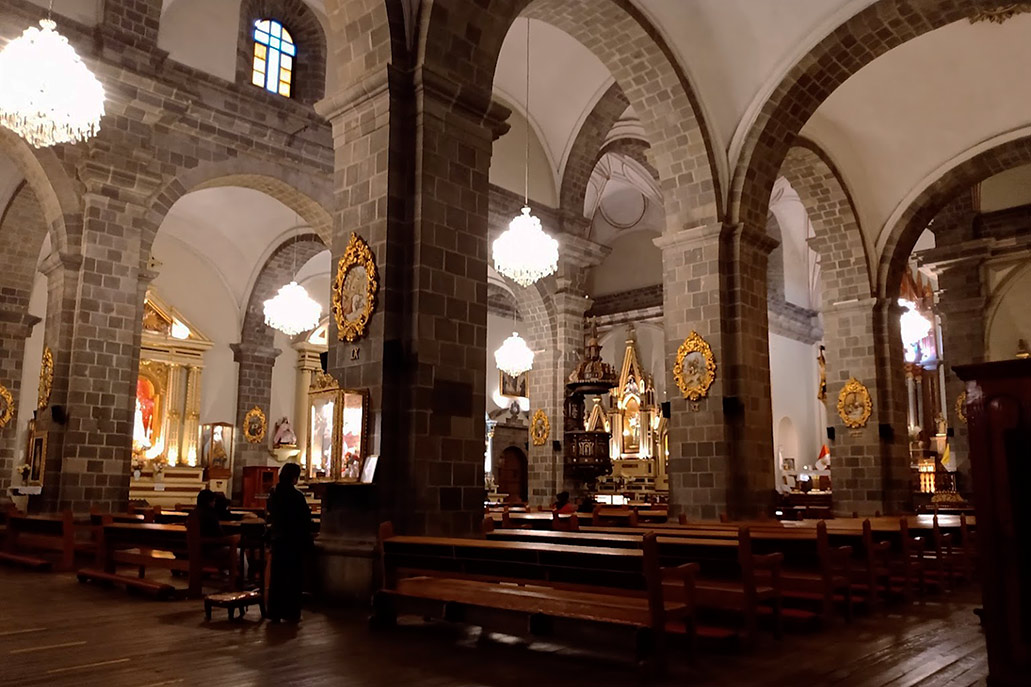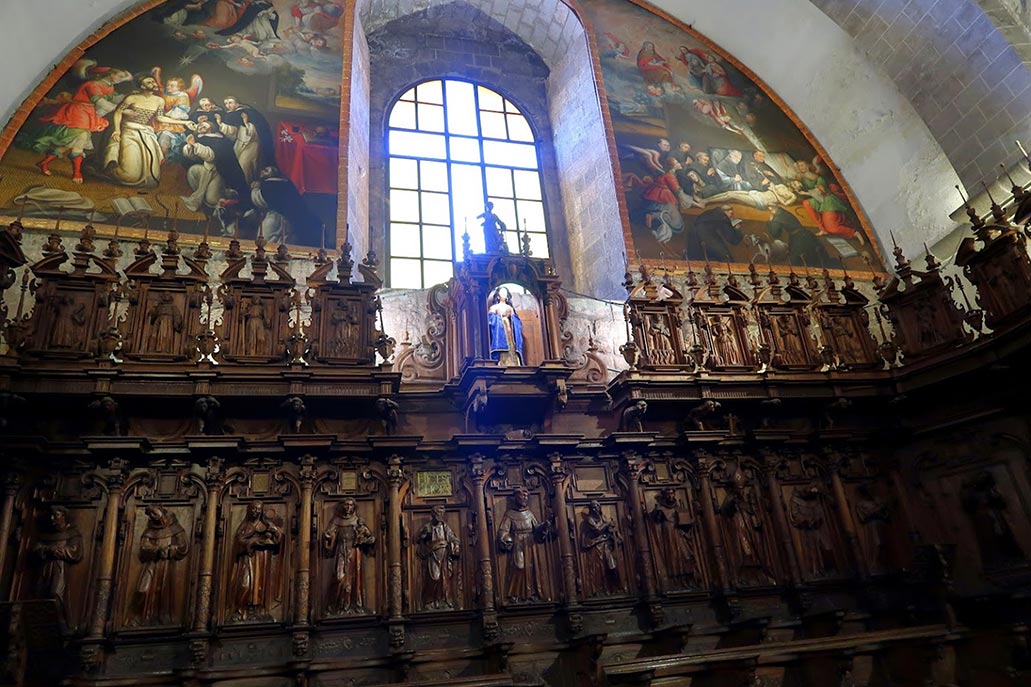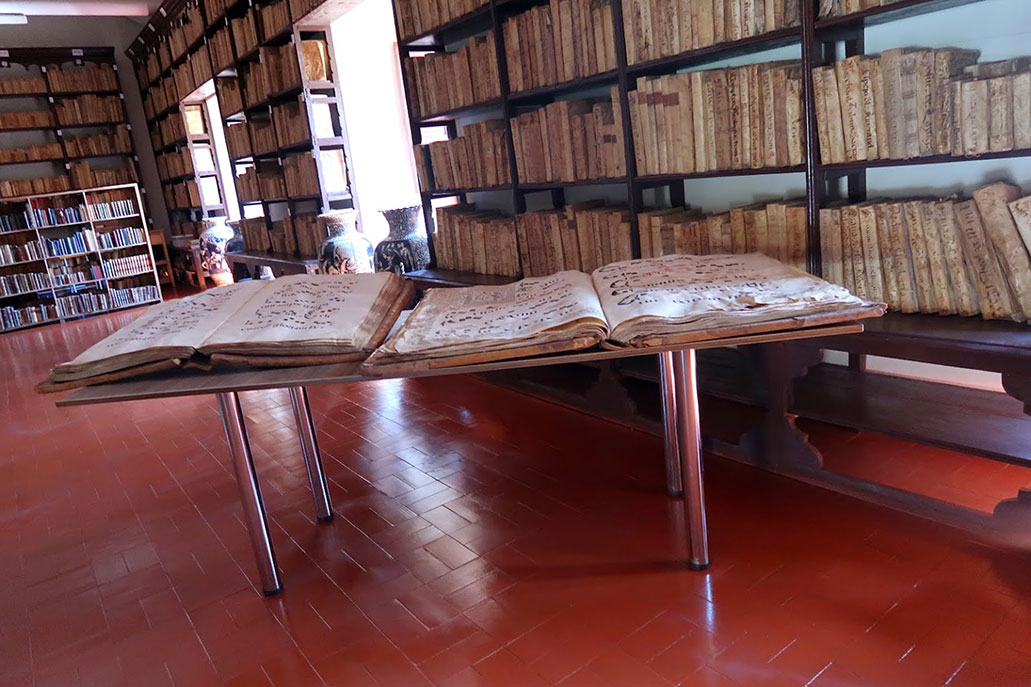Important data of the Church and Convent of San Francisco in Cusco
Both the church and the convent began to be built in the year 1549, because the group of Franciscans managed to locate themselves in the area where these buildings are currently being erected. This territory was donated by Hernando Pizarro after the conquest. In this space, one of the first hospitals worked. In 1572, after the visit of Virrey Toledo, the construction of a church was ordered in honor of Saint Francisco de Asís. In this text, you will learn more about its history and some spaces dedicated to tourism.
Content
The San Francisco Church and Temple are located close to the Plaza de Armas in the city of Cusco, just three blocks away. Built-in the vicinity of a small square that bears the same name. Product of the different historical events, Cusco was considered a point to start evangelization, so the arrival of ecclesiastics orders was not long in coming.
With the order to build the church, more Franciscans arrived to start the long period of evangelization. All this was at the end of the 16th century. This is one of the main reasons why different temples were built in Cusco. We can find the Cathedral, the Santo Domingo church, and the La Merced temple, in others that began, in some cases, only as parishes. There is no doubt that Cusco was the epicenter of Christianity in this new world.
There are some records that the first evangelize to arrive were the Dominicans, who arrived along with the expedition carried out by Francisco Pizarro after the other orders arrived, including the Franciscans. All these were to evangelize in the same way that they did in European lands.
The new culture that began to take shape during the colony had the city of Cusco as its main epicenter, which is the reason why temples, convents, and parishes were created to evangelize the indigenous population that had another religious tradition.
TTransmitting the word of God was the function of religious orders. The order of the Franciscans fulfilled this task to a great extent. It is mentioned that while the church was being built, the new friars began to be trained. It is said that before, between 180 and 200 friars arrived to prepare and then share the word of God.
To obtain more space for construction, it is mentioned that Juan Rodríguez Villalobos symbolically sold the land to the Franciscan order at the end of the 16th century. There the temple, the convent, and three cloisters are built. The museums and the catacombs are located in the second cloister. The doors of these enclosures began to open in an attempt to maintain and remember the evangelizing tradition of the Franciscan friars.
1. The high chorus
The temple has a basilica-shaped base, and it has a high choir that is one of the jewels of cabinetmaking, due to its fine finishes. It has a wooden decoration that recreates images of the Franciscan saints, especially the martyrdom of these religions. Another detail is that the religious came eight times a day to pray. This facility is considered the most sacred place in the entire construction. For some visitors, this venue has the particularity of achieving moments of reflection in its faithful. The different carvings (known as half sizes) of the Franciscan martyrs generate different interpretations due to the sublime finishes. Which causes the reactions mentioned.
It has a lectern (1628) thanks to a weekly whose job was to place the books on the lectern for the religious to sing. The lectern has tortoiseshell decorations and the Franciscan coat of arms. In addition, it has inlaid details that were an Arab influence, at the beginning of the 17th century.
2. Paintings of the Cusco School
The main routes of the convent are decorated with paintings from the Cusco school. One of the most representative is those that report the life of San Francisco and another exhibition of the life of San Antonio de Padua who also belonged to the Franciscan order at the beginning of the 11th century.
It also has one of the most representative paintings by Diego Quispe Tito, in which the final judgment is shown. Painted in the year 1675, it has his signature and his date. In the upper part of the painting, in the center, you can see the heavenly world with Jesus Christ standing on the world, accompanied by the Virgin Mary. In the central strip, you can see his interpretation of purgatory and resurrection. In the lower part of the canvas, hell represented by the seven deadly sins can be seen.
Another attraction is a work of twelve meters by nine meters. You can find the different Franciscans from the main saint to the popes, cardinals, kings, queens, the Capuchins, the Poor Clare sisters, and some nobles with their noble titles. In the upper part of this painting, you can see Jesus in the arms of his mother.
3. Ossuaries and crypts
LBurials were temporary, so the remains were later deposited in ossuaries. This can be seen in the crypts that the convent has. One of them is located under the presbytery, the main area of the temple. When planning the structure of the temple and the convent, it was thought of creating a burial area inside the church. Therefore, the crypts and some four-meter-deep pits were designed. to deposit human bones.
During the creation of the church and the temple, it was believed that burying the dead as close as possible to a sacred place such as a temple or a church gave the soul of the deceased a better chance of reaching heaven or being in heaven. close to the creator God. For this reason, it was constantly requested that burials be carried out inside or in areas close to the temples. When this happened and a certain amount of time had passed, the bodies were dug up and the bones and remains were taken to the crypts and ossuaries.
In this sense, in large religious and sanctified constructions, different options were considered to allow burials and then store the bones. For this reason, the main buildings have sepulchral crypts and catacombs. In the case of the convent and the Franciscan church, you can find both. It should be noted that these burials were made in favor of or in exchange for some tributes or favors for the temple..
They also had an exclusive crypt for the Franciscans under the profundis room. This was a crypt and an ossuary only used for religious who died during the entire evangelization process.
The word “profundis” refers to the room where the deceased are prayed for. It can also be understood that it is this place where the wake of the dead is held in a home. The term is also used as a special place of help for older adults or people with limited resources.
4. Library
Libraries were important facilities for the Franciscan Order. This convent has a space dedicated to the maintenance and care of many books. This space is located on the second floor of the building, especially to prevent any disaster or problems with the texts. These care details were given from the first building project with an exclusively dedicated dimension of 24 meters long and 8 meters wide.
They have books of different sizes, of great importance and historical value. Ten thousand books have been registered. Books above all oriented to the execution of the preaching of the word of God, typical of the Franciscans. Books on philosophy, books on the history of philosophy; titles with inclination to the principles and defense of the catholic church; dictionaries, and religious and civil codes.
The most precious objects that this library possesses; are Bible treatises, bound and printed in Paris in the year 1635. Bibles in four languages, Latin, Greek, Arabic, and Syrian. Up to some versions in seven languages. In addition to a large number of incunabula from the 15th and 16th centuries.
You can find a large number of works on botany, mathematics, optics, world history books, books on the history of Europe and the ancient history of Rome, choral books, theater books, and some possible literary tendencies. All these works should be investigated to achieve better dissemination of everything found. It is important to note that all of them are in perfect condition.
The incunabula are texts or books published and edited at the birth of the printing press. That is, they were the first texts to come to light. It is, for this reason, its publication can date from before the 1500s. It is, for this reason, a large number of these texts were written in Latin and the ancient versions of the languages spoken today.
5. Hours of operation of the San Francisco de Asís convent
EThe San Francisco de Asís convent in Cusco is easy to visit. It is located near the main square and works as a museum. This museum is carried out with the help of a guide who explains and informs us about all the places that make up this old construction. It is possible to visit this place from Monday to Friday from 9:00 a.m. to 12:00 p.m. and 3:00 p.m. to 5:00 p.m. While on Saturdays from 9:00 a.m. to 12:00 p.m. Before entering you will be charged an income rate that is not very high.
6. Price to enter the San Francisco de Asís Convent.
The San Francisco de Asís convent in Cusco has a referential rate of admission. When you pass the door you will find the person or persons in charge of collecting the income. At the same time, you can find sales of candles, souvenirs, and some crafts that you can take as a gift for your friends who still do not dare to visit Cusco. The entry prices are as follows:
| Adults | 15 soles |
| Students | 7.50 soles |
| Chilren | 3.50 soles |
By Imachupicchu – Last updated, August 22, 2024



